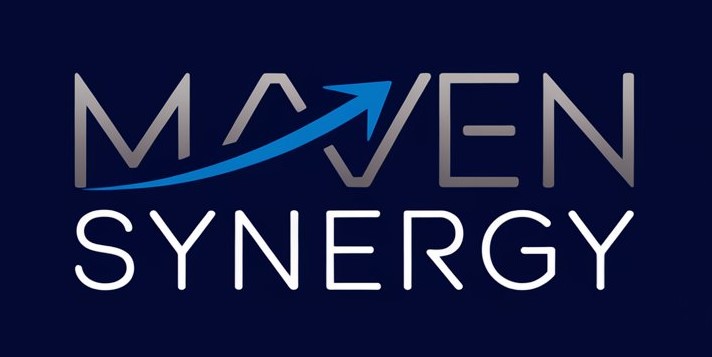Realistic Route to $10,000/Month in 2025: A Proven Path to Financial Freedom
What if you could replace your 9-to-5 income with a sustainable $10,000/month business in 2025? I’m not talking about some overnight success story or get-rich-quick scheme. I’m talking about a REAL path that I’ve seen work time and again for ordinary people just like you.
The traditional route we’ve all been sold—get a degree, climb the corporate ladder, save for 40 years—is BROKEN. Trust me, I’ve been there. But here’s the truth: financial freedom isn’t about luck or privilege. It’s about Knowledge and Application. What you know and how you use it. These two pillars have transformed my financial life.
In this guide, I’ll show you exactly how to identify high-income skills, turn them into profitable businesses, and create multiple income streams that actually works.
Key Takeaways
- Setting a realistic income goal is key to financial freedom
- Financial freedom is achievable through strategic implementation
- Mastering high-income skills is the foundation of financial freedom
- Traditional career paths often limit your earning potential
- Creating multiple income streams provides stability and growth
- The Knowledge-Application-Education framework leads to sustainable wealth
- Consistent action compounds over time into significant results
- Energy management is more effective than time management
- Financial freedom is within reach, starting with your first step
1. Why the Traditional Path to $10,000/Month is Broken

Have you ever felt like you’re running on a hamster wheel? Working harder and harder but barely making progress? I’ve been there too. The traditional career path our parents and grandparents followed just doesn’t cut it anymore. Let me break down why.
1.1 The Limitations of a 9-to-5 Job
I remember my first “good” job out of college. The excitement of that steady paycheck! But that excitement faded FAST when I realized how limited my growth really was.
Here’s the harsh reality: most traditional jobs cap your earning potential. You might get that 3% annual raise (if you’re lucky), but meanwhile, inflation is eating away 4-7% of your purchasing power. You’re actually moving BACKWARD!
Even if you climb the corporate ladder, there’s only so high you can go. I’ve seen brilliant friends hit income ceilings despite their incredible work. The math simply doesn’t add up:
| Traditional Career Path | Financial Reality |
| 40+ hour workweeks | Limited time for side projects |
| Annual raises of 2-3% | Inflation rate of 4-7% |
| Promotion every 2-3 years | Income caps at most corporations |
| 2 weeks vacation per year | Limited freedom and flexibility |
Pro Tip: Calculate your hourly rate by dividing your annual salary by 2,080 (40 hours × 52 weeks). This number reveals the true value of your time and can be eye-opening!
1.2 The Myth of Overnight Success
We’ve all seen those Instagram posts: “How I made $50,000 in my first month selling online!” I call BS on 99% of these stories. They’re selling you a DREAM, not reality.
True financial success isn’t about hitting the lottery or going viral once. It’s about building systems that consistently generate income. I learned this lesson the hard way after chasing several “get-rich-quick” schemes that left my bank account drained and my hopes crushed.
The internet is FLOODED with people promising overnight riches, but they’re usually just trying to sell you their course. Remember: if it sounds too good to be true, it probably is.
1.3 The Shift to Skill-Based Economies
Here’s what excites me: we’re living in a skill-based economy now. Your college degree matters WAY less than what you can actually DO.
I’ve watched friends with no formal education build six-figure businesses by mastering in-demand skills like:
- Copywriting
- Web development
- Social media management
- Video editing
- Digital marketing
- Sales funnels
- AI prompt engineering
The best part? Many of these skills can be learned for FREE online. You don’t need an expensive degree or certification to start earning.
Companies are desperately searching for people who can solve specific problems. They don’t care about your background—they care about results. This shift has created unprecedented opportunities for those willing to adapt.
2. Step 1: Go for Knowledge – Identify and Master a High-Income Skill

Now that we understand why the traditional path is broken, let’s talk about the first step toward your $10,000/month goal: acquiring high-income skills.
2.1 What Are High-Income Skills?
High-income skills share three critical characteristics:
- They’re in high demand
- They’re difficult to automate
- They directly impact a company’s revenue
When I started my journey, I focused on copywriting because it checked all these boxes. Good copy directly increases sales, can’t be easily replicated by AI (yet), and businesses are constantly looking for talented copywriters.
Here’s a breakdown of some top high-income skills in 2025:
| Skill | Average Monthly Income | Learning Difficulty | Automation Risk |
| Copywriting | $5,000-$15,000 | Medium | Low |
| Web Development | $7,000-$20,000 | High | Medium |
| Digital Marketing | $4,000-$12,000 | Medium | Low |
| Video Production | $4,500-$10,000 | Medium-High | Low |
| Sales | $8,000-$25,000 | Medium | Low |
| AI Engineering | $8,000-$20,000 | High | Low |
2.2 How to Choose the Right Skill for You
Don’t just pick the skill with the highest earning potential! I made this mistake and wasted months trying to learn programming when my heart wasn’t in it.
Instead, find the sweet spot between:
- What you’re naturally good at
- What you enjoy doing
- What the market values
Start by asking yourself: “What do people naturally come to me for help with?” Maybe you’re the friend who always designs amazing presentations, or perhaps you have a knack for explaining complex topics simply.
Pro Tip: Use sites like Upwork, Fiverr, and LinkedIn to research which skills are in demand. Look at the highest-paid freelancers and study their services.
2.3 Where to Learn High-Income Skills
The beauty of our digital age is that you can learn almost ANYTHING online, often for free or very little cost. When I was broke and desperate to change my situation, I used these resources to level up:
- YouTube tutorials (completely free)
- Udemy courses (often on sale for $9.99)
- Books from the library
- Free trials on platforms like LinkedIn Learning
- Community forums and Facebook groups
Don’t fall into the trap of thinking you need to spend thousands on fancy courses. Start with free resources, apply what you learn, and invest in premium education only when you’ve validated your interest and aptitude.
2.4 The Power of Continuous Learning
The landscape is changing FAST. What works today might be obsolete tomorrow. That’s why continuous learning isn’t just nice to have—it’s essential for survival.
I dedicate at least 5 hours each week to sharpening my skills and staying ahead of trends. This consistent investment has paid enormous dividends in my income growth.
Remember: in the modern economy, your value is directly tied to the problems you can solve. The more problems you can solve, the more valuable you become.
3. Step 2: Apply – Turn Your Skill Into a Profitable Business

Listen, learning a skill is only half the battle. I’ve seen too many talented people who never make money because they don’t know how to APPLY what they’ve learned. Let’s fix that right now.
3.1 Start Small: Practice and Build Confidence
When I first started copywriting, I was TERRIFIED to show my work to paying clients. So I didn’t. Instead, I rewrote existing ads for practice and shared them with friends for feedback.
Here’s how you can build confidence with your new skill:
- Offer free work to friends and family
- Create sample projects for your portfolio
- Join communities where you can share your work
- Volunteer your skills for causes you care about
The goal here isn’t to make money yet—it’s to get GOOD. Really good. Because confidence comes from competence, and clients can smell insecurity from a mile away.
Pro Tip: Create before-and-after examples to showcase your transformation abilities. For designers, show the old website and your improved version. For copywriters, show the original sales page and your higher-converting alternative.
3.2 Start Charging for Your Services
I’ll never forget my first paid project—$50 to write a product description. I was nervous as hell, but that small win changed EVERYTHING for me.
Here’s how to start monetizing your skills:
- Set starter rates that feel almost too low (but not free)
- Create packages that solve specific problems
- Focus on the results you deliver, not the hours you work
- Raise your rates with each new client until you find resistance
Many beginners make the mistake of charging by the hour. Don’t do this! When you charge hourly, you’re penalized for getting faster and better. Instead, charge based on the VALUE you provide.
| Experience Level | Pricing Strategy | Example Rate (Copywriting) |
| Beginner | Per-project flat rate | $200-$500 per sales page |
| Intermediate | Value-based pricing | $1,000-$2,500 per sales page |
| Advanced | Results-based + royalties | $3,000+ plus 1-5% of sales |
3.3 Scale Your Business with Systems and Delegation
This is where things get exciting! Once you’re consistently earning, it’s time to build systems that allow you to work ON your business, not just IN it.
I hit a ceiling at around $5,000/month because I was doing EVERYTHING myself. Breaking through to $10,000/month required me to:
- Create templates and processes for repetitive tasks
- Automate client onboarding and follow-ups
- Outsource administrative work to virtual assistants
- Build relationships with other freelancers for overflow work
Tools that saved my sanity:
- Asana for project management
- Zapier for automation
- Calendly for scheduling
- Wave for invoicing and accounting
3.4 Real-Life Examples of Success
Let me share a quick story about my friend Sarah. She started learning social media management while working a full-time job. Within 6 months, she had three clients paying her $1,000/month each. By month 12, she quit her job and had scaled to $8,000/month by hiring two assistants to handle the day-to-day posting while she focused on strategy and client acquisition.
The key to Sarah’s success? She niched down to social media for dental practices. By becoming the go-to expert in a specific industry, she commanded higher rates and got endless referrals.
4. Step 3: Educate – Create Multiple Streams of Income

This is where the magic happens! Once you’ve mastered a skill and built a service business around it, you’re sitting on a GOLDMINE of knowledge that others will pay for.
4.1 Why Education is the Ultimate Scalable Business
I love client work, but there’s a limit to how many clients you can serve. Education products break this ceiling because you create them ONCE and sell them FOREVER.
Think about it: I can only write copy for maybe 3-4 clients per month. But my copywriting course? It can serve THOUSANDS of students without requiring more of my time.
Here’s why education is the ultimate business model:
- High profit margins (often 90%+ after production)
- No inventory or shipping costs
- Creates passive income while you sleep
- Positions you as an authority in your field
- Feeds clients back into your service business
4.2 How to Create and Sell Educational Products
You don’t need fancy equipment or a Hollywood production team. My first course was literally just screen recordings and a PDF workbook, but it made over $20,000 in its first launch.
Here’s my step-by-step process:
- Identify your audience’s biggest pain points
- Create a solution that addresses those specific problems
- Start small with a mini-course or ebook (under $100)
- Validate with a small launch before investing in bigger productions
- Reinvest profits to improve quality and marketing
Pro Tip: Your first product doesn’t need to be perfect! Get it to 80% quality and launch. You can always improve it based on feedback.
| Product Type | Price Range | Creation Effort | Platform Options |
| Ebook | $9-$49 | Low | Gumroad, Amazon KDP |
| Mini-course | $47-$197 | Medium | Teachable, Podia |
| Comprehensive course | $297-$997 | High | Kajabi, Thinkific |
| Membership | $27-$97/month | Ongoing | Circle, Mighty Networks |
4.3 Building a Loyal Audience
All the education products in the world won’t make you money without an audience. Building one takes time, but it’s worth every second.
When I started, I committed to providing value FIRST. I shared free content consistently on:
- A weekly email newsletter
- LinkedIn posts and articles
- YouTube tutorials
The most powerful audience-building strategy I’ve found is the “One Person” approach. Instead of trying to reach thousands, I create content as if I’m speaking directly to ONE ideal student. This creates a deeper connection that generic content never will.
4.4 Monetizing Your Expertise
Beyond courses and ebooks, there are so many ways to monetize your knowledge:
- Group coaching programs (higher price point, lower volume)
- Affiliate marketing (promoting tools you genuinely use)
- Sponsored content (once you have an audience)
- Premium communities (recurring revenue model)
- Speaking engagements (great for credibility and lead generation)
I’ve found that the sweet spot is having 3-5 different income streams. Fewer than that is risky; more becomes difficult to manage effectively.
Remember: each income stream should complement the others. My service clients often purchase my courses, course students sometimes upgrade to my coaching program, and coaching clients refer new service clients. It’s a beautiful ecosystem when done right!
5. Overcoming Challenges on the Road to $10,000/Month

Let’s get real for a minute. The journey to $10K/month isn’t all sunshine and rainbows. I’ve hit roadblocks that made me want to quit EVERYTHING. But here’s the difference between those who make it and those who don’t: resilience.
5.1 Embracing Failure and Learning from Mistakes
My biggest business failure cost me $12,000 and three months of work. I launched a course that exactly ZERO people bought. Talk about a gut punch!
But that failure taught me more than any success ever could. I realized I hadn’t validated my idea first, and I was solving a problem nobody cared about.
Here’s how I’ve learned to handle failures:
- Document what went wrong without blame or excuses
- Identify the lesson and what you’ll do differently
- Share your experience with others (builds authenticity)
- Implement changes quickly instead of dwelling on mistakes
Successful entrepreneurs aren’t those who never fail – they’re those who fail FORWARD. Every setback contains the seeds of your comeback if you’re willing to look for them.
5.2 Time Management and Productivity Tips
When I first started my business, I worked 14-hour days and still felt behind. I was busy but not productive. Sound familiar?
The breakthrough came when I stopped managing time and started managing energy. I realized I do my best creative work in the morning, so I protect those hours fiercely for high-value tasks.
Here’s my productivity system that helped me reach $10K/month without burnout:
| Time Block | Energy Level | Best Activities | Tools I Use |
| 6-10 AM | Highest | Creative work, writing, strategy | Focus app, noise-canceling headphones |
| 10-1 PM | Medium-high | Client calls, team management | Calendly, Zoom, Asana |
| 2-4 PM | Medium-low | Email, admin tasks, learning | Boomerang, Todoist |
| 4-6 PM | Lowest | Low-pressure tasks, planning | Journal, Notion |
Pro Tip: The Pomodoro Technique saved my sanity! Work intensely for 25 minutes, then take a 5-minute break. After four cycles, take a longer 30-minute break. This keeps my mind fresh and prevents burnout.
5.3 Staying Consistent and Patient
You know what’s unsexy but CRUCIAL for success? Consistency. Showing up day after day, even when you don’t feel like it. Even when nobody is watching.
I track my key activities using a simple habit tracker. This helps me see that I’m making progress even when results aren’t immediately visible.
My non-negotiable daily habits:
- 1 hour of skill development
- 3 outreach messages to potential clients/partners
- Creating or improving one piece of content
- 30 minutes of strategic planning
Remember this: The compound effect of consistent action is POWERFUL. Most people quit right before the breakthrough. Don’t be most people.
Conclusion

We’ve covered a LOT of ground together. By now, you understand why the traditional path to wealth is broken and how the three-pillar framework—Knowledge, Application, and Education—can help you build a sustainable $10,000/month business in 2025.
This isn’t some fantasy. I’ve walked this path myself, starting from zero just a few years ago. I’ve watched friends and students transform their financial lives using these exact principles.
The question isn’t whether this roadmap works—it does. The question is: will YOU work the roadmap?
Financial freedom isn’t just about money. It’s about having the power to make choices based on what brings you joy rather than what pays the bills. It’s about waking up excited rather than dreading the alarm clock. It’s about building something that’s YOURS.
Your journey to $10,000/month begins with a single step: choosing your high-income skill. Then applying it to build a service business. And finally, packaging your knowledge into scalable education products.
Will there be challenges? Absolutely. Will it require hard work and patience? You bet. But is it worth it? A thousand times YES.
So what’s your next move? Leave a comment below sharing which high-income skill you’re going to focus on first. I read and respond to every comment, and I’d love to support you on this journey.
Remember: The best time to start was yesterday. The second-best time is NOW. Your future self is thanking you already for taking the first step toward true financial freedom.
Frequently Asked Questions
1. What is the fastest way to earn $10,000 a month by 2025?
The fastest way to earn $10,000/month is by mastering a high-income skill like copywriting, coding, or digital marketing, and scaling it into a business. Start by learning the skill, offering services, and eventually creating scalable income streams like online courses or coaching programs. Consistency and action are key to achieving this goal in 2025.
2. What are the most profitable high-income skills to learn in 2025?
The most profitable high-income skills in 2025 include copywriting ($5,000-$15,000/month), web development ($7,000-$20,000/month), AI engineering ($8,000-$20,000/month), and sales ($8,000-$25,000/month). Digital marketing ($4,000-$12,000/month) and video production ($4,500-$10,000/month) also remain in high demand. The ideal skill combines market demand with resistance to automation and direct impact on business revenue. Choose a skill that aligns with your natural abilities and interests while offering strong earning potential. These skills are scalable, in high demand across industries, and can be learned online through platforms like YouTube, Udemy, and Coursera.
3. Can I really make $10,000/month without a 9-to-5 job?
Yes, you can make $10,000/month without a 9-to-5 job by building a skill-based business. Many people have achieved this through freelancing, creating digital products, or offering coaching services. The key is to focus on scalable income streams and consistently provide value to your audience.
4. How long does it take to start earning $10,000/month?
The timeline to earn $10,000/month varies depending on your starting point, effort, and the skill you choose. With consistent effort, many people achieve this within 12–24 months. Start by learning a high-income skill, offering services, and scaling your business through systems and automation.
5. What are the best platforms to sell digital products and online courses?
The best platforms for selling digital products and online courses depend on your specific product type. For ebooks ($9-$49), consider Gumroad or Amazon KDP. Mini-courses ($47-$197) work well on Teachable or Podia, while comprehensive courses ($297-$997) benefit from the advanced features of Kajabi or Thinkific. For online courses, check out Teachable, Udemy. For membership programs ($27-$97/month), platforms like Circle or Mighty Networks offer robust community features. These platforms are user-friendly, have built-in audiences, and provide tools to market and sell your products effectively. When selecting a platform, consider pricing structure, customization options, payment processing, and marketing tools that align with your business goals.
6. How can I stay motivated while working toward $10,000/month?
Staying motivated requires setting clear goals, tracking your progress, and celebrating small wins. Surround yourself with like-minded individuals, join online communities, and remind yourself of the financial freedom and lifestyle you’re working toward.
7. What are the biggest challenges when trying to earn $10,000/month?
The biggest challenges include overcoming self-doubt, managing time effectively, and staying consistent. Embrace failure as a learning opportunity, prioritize tasks that drive results, and focus on building systems to scale your business.
8. How can I create multiple streams of income to reach $10,000/month?
To create multiple streams of income, combine freelancing, selling digital products (e.g., online courses, eBooks), affiliate marketing, and coaching. Diversifying your income sources reduces risk and accelerates your path to $10,000/month.
9. Do I need a large audience to make $10,000/month?
No, you don’t need a large audience to make $10,000/month. Focus on building a loyal, engaged audience that trusts your expertise. Even a small but dedicated following can generate significant income through high-ticket offers like coaching or premium courses.
10. What’s the first step to start my $10,000/month journey?
The first step is to identify a high-income skill that aligns with your strengths and market demand. Start learning through free or paid resources, practice consistently, and begin offering your services to gain experience and build confidence.
11. What are the biggest mistakes to avoid when building multiple income streams?
The biggest mistakes to avoid when building multiple income streams include trying to build too many streams simultaneously (diluting your focus), not validating ideas before full development, underpricing your services long-term, failing to create systems for scalability, and neglecting to build an audience before launching products. Many entrepreneurs also make the error of prioritizing passive income too early rather than establishing service-based revenue first. Focus on mastering one income stream at a time, creating proper documentation and processes, and ensuring each new stream complements your existing business rather than competing for your limited resources.
12. How much money do I need to invest to start a $10,000/month online business?
Starting a $10,000/month online business requires minimal initial investment—typically $500-$2,000 for essential tools and education. The primary investment is your time and effort rather than capital. Begin with free or low-cost resources: utilize free versions of software, learn through YouTube and library books, and upgrade to paid tools only when revenue justifies the expense. Avoid the common mistake of overspending on premium courses or equipment before validating your business model. Focus first on acquiring skills and clients, then reinvest a percentage of revenue into tools that directly improve efficiency or output quality.
13. How can I overcome imposter syndrome when starting my own business?
Overcome imposter syndrome when starting your business by recognizing it as a common experience among entrepreneurs at all levels. Build confidence through documented results and client testimonials. Start with projects within your current skill level, gradually taking on more challenging work as you improve. Join communities of like-minded entrepreneurs who can provide support and perspective. Remember that expertise develops through experience, not perfection—focus on solving real problems for clients rather than comparing yourself to established experts who have years of experience.
14. What’s the difference between active and passive income streams?
The difference between active and passive income streams lies in the correlation between time invested and money earned. Active income (like client services) requires your direct time and effort for each dollar earned—when you stop working, the income stops. Passive income sources (like courses, ebooks, or membership sites) require significant upfront work but continue generating revenue with minimal ongoing maintenance. Most successful $10,000/month businesses combine both: using active income for cash flow and stability while building passive income assets for scalability and long-term growth.

